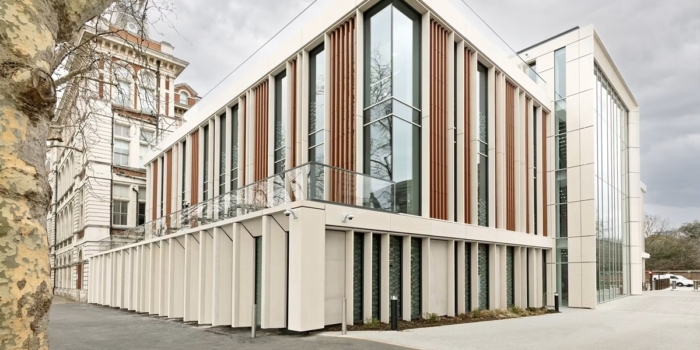David Willetts: Higher Education Funding Council for England 2013
HEFCE 18 April 2013 Speech Originally given at Imperial College London.
You don’t need me to tell you that this year has seen major changes in higher education.
There have been important gains from our reforms – with the quality of the student experience brought to the fore together with more cash going to our universities for teaching.
But I recognise it has also been a year of uncertainty.
LANGLANDS/MELVILLE-ROSS
I have always wanted universities to emerge from the reform process stronger, with students better served. That has been the vision, too, of Alan Langlands. He has been a rock of stability amidst so much change. I am sorry he is leaving HEFCE, but I quite understand the reasons for his moving to be vice chancellor at Leeds University, particularly given his close personal connections with the area.
Alan has been an absolutely first-class head of HEFCE. It is, of course, heir to the old University Grants Committee – a body that also had to wrestle with cuts in public spending in its time.
During the economic crisis of 1931, the Chairman of the UGC, Sir Walter Moberley, received a telegram from the Treasury while shooting grouse in Scotland. It informed him that his grant for that year was to be reduced. From the moor he telegrammed back that such a thing was unthinkable and the most he would forego was a modest reserve built up from previous years for future development. He won.
So there is a long tradition of strong leaders of the funding councils and I am sure I speak for every one of us here today when I say how grateful we all are to Alan and how we wish him well.
Given the importance of stability at HEFCE, I am delighted to announce that Tim Melville Ross has agreed to extend his time as chair until 2016. We all value his courtesy and wisdom. He will be an important figure of continuity.
ROBBINS
The rest of this year will bring to the fore the name of another great public servant – Lionel Robbins. His report on higher education was published in October 1963 and immediately accepted by the then Conservative Government. His two researchers, Claus Moser and Richard Layard, are both still with us and it is fitting that the institution they have all served, the LSE, will be holding a conference to mark the fiftieth anniversary. So will the Institute of Education. I expect there will be others too.
The Robbins Report is up there with Beveridge and Butler as one of the great founding documents of the modern welfare state. So I have been re-reading it and have been struck by the parallels with some of the big questions we face today – and by some of the differences.
Robbins does not worry much about money – it gets 17 out of 276 pages. I am always told how much more civilised things were then, compared with today’s policy documents which focus on such awkward utilitarian questions. Robbins does briefly flirt with the idea of student loans, though as an idea for “ future experiment”. He didn’t have to focus on finance because the financial model had largely been set three years earlier by Sir Colin Anderson, in a report that paved the way for the introduction of a national student support system in 1962. And one of the reasons we are also celebrating this year the fiftieth anniversary of some of our leading universities – Bath, Lancaster, Loughborough, Surrey, Sussex, Warwick and York – is that the plans for expansion had already been put in place.
FUNDING AND FLEXIBILITIES
This Government did not have the luxury of avoiding financial issues. We had to confront tricky financial questions and I am confident that, in the circumstances, we got the tough decisions right. We have increased the cash going to universities for teaching, while avoiding up-front fees for students and reducing costs to the taxpayer.
We have also removed many number controls, making choice real, and getting a better match between students and institutions. By this Autumn, we will have freed from number controls new full-time students with ABB or equivalent grades. That is a third – around 120,000 – of full time students. All part-time places continue to be exempt from number controls. More school leavers than ever before are getting on to their first choice course.
I have now asked HEFCE to consider the best way to deliver further flexibility for 2014/15 – in line with our white paper commitment that ‘the share of places liberated from number controls altogether rises year on year”.
For 2014/15, we will continue to increase student choice and to enable popular institutions to expand. HEFCE will soon be consulting on a flexible and dynamic way of responding to demand from students who can’t benefit from the current freedoms for those with a high tariff of ABB or above. We want greater freedoms and flexibilities for all institutions, not just those with high-tariff students. 2014-15 will be a step towards that.
Where student demand is low and institutions significantly under-recruit then unfilled places will be moved to those with stronger recruitment patterns. This will give greater flexibility to all institutions. It will remove some of the fear of penalties for over-recruitment and provide a sustainable means of matching supply with demand. Combined with the current ABB+ measure, this will allow for dynamism across the whole sector. It will allow all students more choice about where to study, not just those who achieve a certain attainment level – truly putting students at the heart of the system.
THE VALUE OF HIGHER EDUCATION
One line of criticism is that our policies rest on a belief that there are only private returns to our universities and we do not understand their public value.
This is misconceived.
We fully understand that the value of universities comes in many forms. There is of course a public value to university and that is reflected in the substantial public support we still offer.
We cover the extra teaching costs of high-cost subjects. We quite rightly pay for that element of loans which we do not expect to be repaid. And we provide students with loans and grants for maintenance, which are higher than in many other countries. But there are also private gains too, which is why it is fair to expect graduates to pay back as well. Our reforms rebalance support so that the contribution from graduates goes up from 40 per cent of the total cost to 60 per cent. The contribution from taxpayers falls commensurately. But taxpayers will still pay for 40 per cent of the cost of a degree.
Higher education is also very likely to boost your earnings – and if anything, that boost is sustained even during these tough times, as employers look for more qualified staff. And this boost to earnings (of over £100,000 net of tax over a lifetime compared to an A level student) is not just a boost for the individual. It also means there is a boost to long term economic growth and the tax base, as graduates pay more tax too. Exactly the sort of argument my friends in the Treasury are interested in at the moment.
These public and private returns are not just economic but there are also wider social and cultural gains too. You can think of these different benefits as comprising a quadrant of public and private; economic and social. Each of the four boxes is full of good things which universities do.
Going to university increases the chances that you will vote and appears to make you more tolerant. It improves your life expectancy. You are less likely to be depressed, less likely to be obese and more likely to be healthy. These are benefits for individuals and for society. That is what you would expect from such inherently worthwhile institutions as universities.
And all these different types of benefit look to be as important as ever. The pessimism that somehow higher education is not as valuable as it once was is plain wrong.
Economists assess all these different types of benefit and put figures on all of them. That is what economists do, to try to make everything commensurable with everything else. But non-economists do not have to think like that if you do not wish to. If you feel that economic calculation is too reductionist a way of measuring the value of a university then you can just assert that higher education is profoundly worthwhile in itself. We understand that. But universities do have a host of practical benefits and we should not argue ourselves into the absurd position where assessing and measuring these is seen as somehow betraying the true value of the university.
Universities are for example important for their local economies. Tim Wilson produced an excellent report on this, one outcome of which was an improved regime for sandwich courses. Now we have asked Andrew Witty to bring the threads together. He wants to see universities at the heart of local clusters of economic growth. We are fortunate that one of our leading businessmen, who is also chancellor of Nottingham, is willing to focus on this crucial issue.
Through the UK Research Partnership Investment Fund, we are securing over £1bn investment in R&D collaborations between universities, businesses and charities – enhancing university research infrastructure and building strategic partnerships between universities and the private sector which will help support long-term economic growth. 14 projects were announced in the Autumn – with more to come later this year. In addition, the university research base will also benefit from £600m additional research capital allocations announced in the Autumn Statement supporting the “8 Great Technologies”.
In these tight times it is essential that we think creatively about capital support to develop HE infrastructure. So last year the Government announced the UK Guarantee Scheme. It is a very flexible financial instrument to support investment plans and I would urge you to make good use of it. The door is open at Infrastructure UK to help you assess whether guarantees are right for your institution.
COMMUNICATIONS AND ACCESS
Last year, I said it would be a tragedy if anybody were put off from applying for university by the mistaken belief that somehow they had to pay and could not afford it. But it would also be a tragedy if they were put off by the belief that going to university was useless or pointless. And students from poorer backgrounds may be particularly susceptible to arguments that there is no point in going to university.
For many people it is one of the most transformational experiences of their lives. We all need to communicate this. Many university applicants come from families with a history of attending higher education, or are at schools with successful records in sending people to a university. But other applicants are in the dark about the differences between different institutions, different courses and different options. That is why we launched the Key Information Set last year, so that people have access to comparable data on costs, courses and employability.
It is working well, with 3.6 million website hits so far, and many more on partner sites. But I want to go further in making the system work better. We need to communicate the diversity of the higher education sector to individuals much earlier in the process, not just after they have submitted their UCAS form. New research from the United States by Caroline Hoxby shows that simply posting a pack of information to low-income students with high SAT scores raises the proportion who go to a college closely matching their qualifications from 30 per cent to 54 per cent.
I am now working with DfE to see whether we can better target information at pupils from poorer backgrounds who have done well at their GCSEs. This is tricky terrain. With today’s sensitivities about data protection, it is hard for ministers to drop a line directly to Joe or Gemma congratulating them on their exam results and urging them to think about going to university. But perhaps we can write to the head teachers with a message to pass on.
We are not going to start telling people where to apply. But I want to work with you so that we can go further in ensuring that students know where to look for the information that will help them make the right decision for them – about the range of universities and the support available. Nicola Dandridge has agreed to work with us on what such information might say.
We have just had the highest rate ever of applications for university from the most disadvantaged quintile. In 2004 it was a scandalous 11 per cent application rate. Now it is up to a barely respectable 19.5 per cent compared with 54 per cent from the most advantaged quintile. I do not believe that just because you come from a poor family you are less suited to go to university. Nor do I believe that if you have had the misfortune of poor quality schooling this should ever bar you from higher education – the evidence is that university can transcend previous disadvantages.
Universities also need to be confident that they will gain credit for their outreach activity even when the young person chooses another university. With 3,000 secondary schools in England, and over a hundred universities, the number of potential links between them is very large indeed. Again, we have asked HEFCE and OFFA to advise on this. We are asking them to consider if we need some kind of simple infrastructure. It might be a small team of dedicated people to engage with schools and colleges and ensure their pupils get access to the right outreach activities for them. It could ensure some schools don’t fall between the cracks whilst others get a surfeit of attention.
An important part of that will be recognising when one university succeeds in helping someone reach a different university, perhaps one that suits them better. Currently, the spillover benefits of excellent widening participation initiatives – such as Queen Mary’s ‘Centre for the Cell’ on the Whitechapel Road – are not recognised. I want to see the right incentives in place for more such initiatives. Collaboration is as important as competition.
With so much money going in to so many different initiatives, there is an opportunity for OFFA and HEFCE to assess what works and what doesn’t. Access budgets, are growing massively. They are up from £550 million last year to £740 million this year and are expected to reach £920 million in 2014-15. We must ensure this surge in spending is used effectively. As this research comes in we can expect universities to act on it.
A LEVEL REFORM
University engagement with schools can come in many forms. As well as your mainstream access activities you might be sponsoring an academy or a University Technical College. There are also historic links through university involvement in A levels. I hope many of you will be contributing to the university input into the content of the new exams which Ofqual and Awarding Organisations will be developing. Perhaps I can offer one piece of advice, which comes straight from Robbins. Robbins was particularly worried about the perils of specialisation. It comes up time and again in his great report. He feared that English schools were forcing students to specialise too soon and blamed universities for this.
We all understand the problem. Ask a group of university physicists about 18 year-olds’ knowledge of physics and they will be shocked at how limited it is and demand more. The same goes for the historians. For each specific discipline, the pressure from academics can easily be for more specialised knowledge sooner. And as universities control their own admissions in this country – quite rightly – their power can shape the way schools structure subject choices after GCSEs. But we cannot just let each subject discipline shape its own A level without looking at the wider requirement for university students with a breadth of understanding and knowledge: scientists with a knowledge of history; historians who can do some maths; mathematicians with a foreign language. I know that Michael Gove with his broad Scottish education recognises the importance of this point.
So, to everyone who believes in the civilising role of the university in this the fiftieth year of Robbins, I say that the role of universities in A levels reform is an opportunity to advance the cause of a broad liberal education.
TEACHING /TRAC
We are now seeing the biggest cultural shift in our universities for a generation as teaching is brought back centre-stage. This will mean changes to teaching practices and enabling staff to work more flexibly to meet student demand.
Better information about what is going on is crucial. I know many of you shudder at the information requirements placed on you but it is interesting how attached universities have come to the TRAC system.
HEFCE consulted on the future of TRAC and there was a strong argument from institutions to retain it. However, today I can confirm they will simplify the requirements so as to reduce the burdens on you by up to 20 per cent.
And let’s make good use of information. I want to see students provided with clear information about where their money goes and what they are getting for their fees, rather like those pie charts you get from your council explaining how your council tax has been spent. When I was in Opposition, we said that the test of any changes in financing higher education should be whether students gained from them. That remains my test.
Trying to pin down the quality of teaching is a difficult exercise. One approach is to try to measure the cognitive gains made by students during their courses. After all, universities are supposed to train the mind, so if you survey students when they arrive to assess how well, for example, they comprehend a complex argument and then measure them again when they leave, one might hope to see a clear improvement. Academically Adrift, the book by Arum & Roksa, tried such a measure in the US and got disappointingly modest returns. They found that “45% of students did not demonstrate any significant improvement in learning during their first two years of college”. I recognise that there is quite a lively debate about their methodology, response rates, the instruments used and interpretation.
The OECD has recently tried to develop an approach to measuring learning outcomes from HE which would be meaningful across different institutions and countries with its Assessment of HE Learning Outcomes (AHELO) feasibility study. The aim is to have a university equivalent of its PISA survey for 15 year-olds or the recently launched assessment of adult skills. Early reports suggest that they too have found the methodological problems hugely challenging.
A different approach has been proposed by the estimable Graham Gibbs in his work ‘Dimensions of Quality’ and the follow-up report. He argues that student engagement in learning is a good proxy for how well students are learning.
Engagement can be measured by a range of indicators including class/cohort size (which he attaches more importance to than contact hours); who does the teaching; close contact with lecturers; effective feedback on assessments; and student effort.
These are different indicators from those we have in our Key Information Set. The KIS has been constructed to reflect what current students say they want to know. Nevertheless, I hope we can continue to reform the wider information landscape to take account of Gibbs’ important findings. Of course, these are more complex factors to communicate. But I challenge the sector to develop a coherent and common presentation of these key factors so that students can easily access them on institutional websites.
CONCLUSION
So today I have announced: * further liberalisation on student number controls for 2014/15 to benefit the full range of students and institutions; * joint work with the Department for Education on direct communication about higher education to students who have done well in their GCSEs; * a welcome for the role universities are taking on A-Level reform, while encouraging you not to press for even more specialisation earlier; * a further reduction in the burdens on institutions, with a 20 per cent reduction in TRAC requirements; and * a commitment to make progress on supplementing the Key Information Set with information on where students’ fees are going and fresh measures on student engagement in line with Graham Gibbs’s work.
I am confident we can work together to achieve this. As always, Hefce have played a crucial role for which I am very grateful. Overall this has been a strong year for the sector and HEFCE as the reforms have come into effect. I am confident that we now have a stronger HE system, with students better served.




